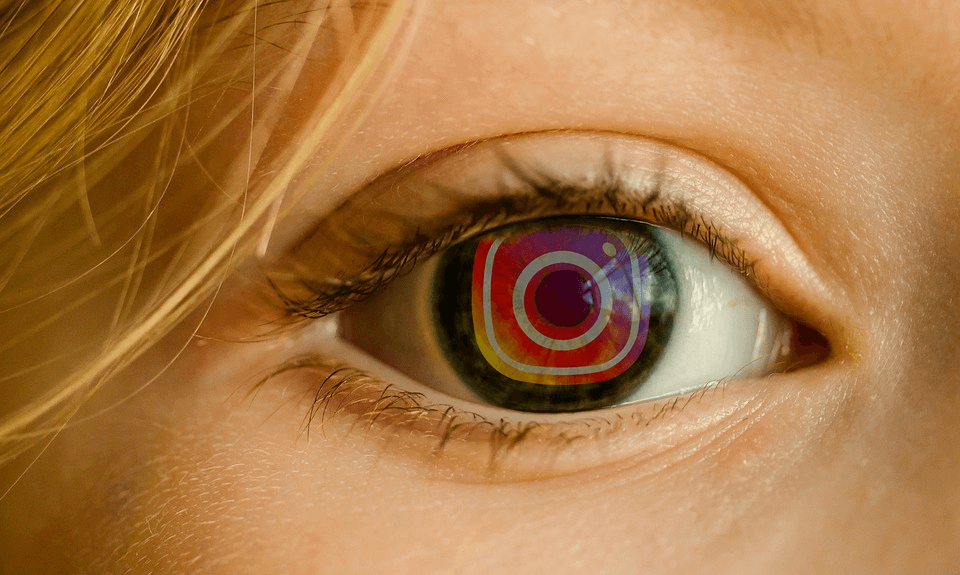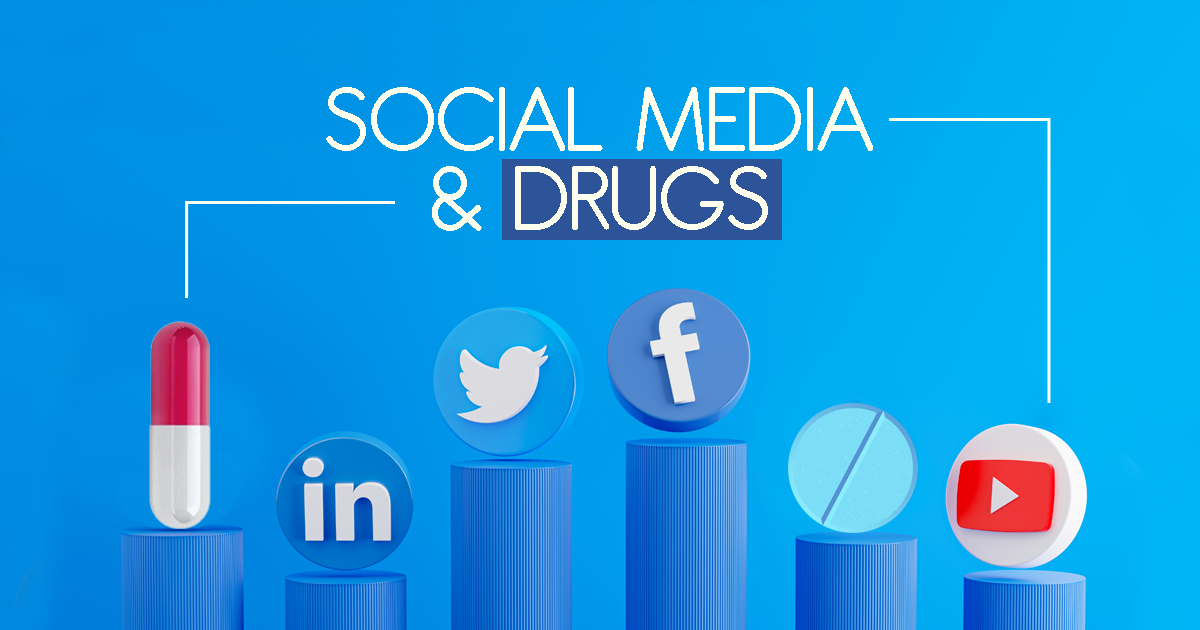Teens and young people experimenting with drugs and alcohol certainly isn’t new. There’s evidence. However, social media could be influencing substance use patterns. The relationship between social media and drugs occurs in multiple ways.
Along with potentially influencing drug use, we’re learning just how damaging the effects of social media can be on mental health in young people, as well as contributing to low self-esteem.
Social Media and Drug Use Statistics
In a study conducted by the National Center on Addiction and Substance Abuse at Columbia University, researchers found teens who regularly use social networking outlets were more likely to drink, use drugs, and buy tobacco. The study looked at 2,000 adolescents.
Seventy percent of respondents said they used social networking sites on any given day. Among those social media users, compared to non-users or light users of social media, they were five times more likely to buy cigarettes and three times more likely to drink.
They were twice as likely to use marijuana.
According to research from the American Academy of Child and Adolescent Psychiatry, 90% of teens have used social media, and 51% use it at least once a day. Around 45% of teens say they’re online on a nearly constant basis. Social media outlets are the most common way teens engage with content online.
How Does Social Media Influence Drug and Alcohol Use Among Teens?
How does the media influence drug use, specifically social media? There are several ways the concepts of teen substance use and social media intersect.
FOMO
FOMO stands for fear-of-missing-out. It’s one of the significant issues with social media sites, and it’s responsible for a lot of the negative effects these platforms can have on mental health.
For teens, social media can create the idea or misconception that everyone is having more fun than they are, and they’re missing out on something great. The peer influences coming from these apps and sites can often be negative.
A teen might see parties or other events, and they feel like they’re not having the kind of fun that other people are. This can put teens who are already impressionable at risk of using drugs or alcohol, perhaps as a way to feel like they’re also experiencing what they see online.
Unfortunately, teens often have a favorable impression of their peers they see using drugs or alcohol or getting drunk or high and then posting it online. This can include the use of both prescription drugs and illicit drugs.
This then creates the concept or reinforces the idea that underage drinking, binge drinking, or using substances to have fun is regular and even desirable. These sites become an amplified version of peer pressure regarding illegal drugs and alcohol without showing the many negative consequences.
The more exposure to substance use young people have, the more likely they are to see the use of alcohol and illicit substances as normal. There’s less of a fear of an addictive substance when it’s amplified as it can be on social sites.
These activities aren’t being seen as health risk behaviors. They’re the norm in the online world, changing young people’s overall attitudes towards substance use.
Along with what peers share on these sites and these apps being influential to teens, so are celebrity posts.
Social networking sites give a feeling that you’re behind the scenes in the lives of celebrities, and unfortunately, that peak into their lives may include drugs or alcohol. This further glamorizes substance use among teens who want to feel accepted or like they’re following in the footsteps of their favorite celebrities.
Overall, one of the significant risks of social networking use, particularly among young people, is the potential it creates distorted perceptions of what’s dangerous and what’s not. Teens only see the good behind certain behaviors through online content. They tend to see things, including substance use, as safer than what they are in reality.
Accessibility
The use of social sites can create more accessibility to drugs or alcohol. Teens on these platforms have access to so many people that they might not otherwise come in contact with.
Teens can use social platforms to obtain drugs or alcohol. They have access to illegal substances and drug dealers, along with exposure to drug use in images and videos. The combination can be catastrophic.
Poor Mental Health
Another way these social sites less directly influences substance use among young people is through effects on mental health. Research shows links between heavy social media use, low self-esteem, and generally negative mental health. These are linked significantly to underage substance use.
If a teen is dealing with emotional or mental health issues, they may already turn to social media as a coping mechanism. If they’re influenced by seemingly happy people using drugs or alcohol, it will have more of an effect on them.
Digital media can cause unhappiness and general life dissatisfaction and increase the risk of developing specific mental health issues, including depression and anxiety. Around 27% of children who spend three or more hours a day on social media platforms have symptoms of poor mental health.
Poor mental health and mental health disorders are often linked to substance use. Substance use may be a way to self-medicate the symptoms of a mental illness.
These situations can become a loop that feeds into one another. The deeper a young person sinks into depression, for example, the more they might turn to social media apps which in turn influences them to drink or use drugs, and so on.
Substance use and mental health disorders also contribute to isolation from friends and family. When teens isolate themselves, they might rely on the online world more to replace human connection.

Other Negative Effects of Social Media Websites and Apps
Along with raising the risk of mental health disorders and substance use, other adverse effects linked to social sites include:
- Excessive use distracts young people from other priorities in their lives, including their schoolwork.
- Using these sites and apps disrupts sleep.
- Young people tend to develop unrealistic expectations and relationships when they rely on social media platforms too often.
- Use that’s excessive can contribute to feelings of fear or sadness.
- A teen might overshare because of their prevalent use of apps or specific websites.
- Teens are being exposed to cyberbullying.
- Some potential online predators can access young people through sites and apps.
Social Media Can Be A Dangerous Trigger
For many people, the holiday season brings feelings of anticipation, joy, and excitement and fond memories of years past. However, for those in recovery, this time of year can bring overwhelming feelings of dread, anxiety, and loneliness fueled by disturbing memories of alcohol or drug-fueled parties and family gatherings. And with alcohol flowing at most work events and holiday parties, this is the most difficult time for those trying to stay sober. Most rehab facilities teach those in recovery different ways to tackle this time of year, whether it be through attending as many 12-Step meetings as they can, finding support among sponsors, family, and friends, and to avoid as many tempting situations as possible that can derail his or her recovery. One aspect of the season that many people in sobriety may overlook is how social media can play a major trigger during their recovery.
Social Media Collaboration Leads to Addiction Recovery Awareness
Google, Facebook, and Twitter have partnered with the Center for Safe Internet Pharmacies (CSIP) through Tech Together, an online platform to help those struggling with addiction. This website is full of resources related to addiction recovery. Because of social distancing rules, 12-Step groups and other in-person meetings cannot take place.
Tim Ryan, the star of the A&E documentary “Dope Man,” believes forcing those in recovery into isolation during the pandemic can cause them to relapse. With over 1,361,000 members in Alcoholics Anonymous, a lot of people are going to be turning to alternative resources. A study by Harvard and John Hopkins said that 2.5 million adults are using technology right now to aid in their recovery, and that online interventions helped.
The New York Times says that alcohol use has risen up to 25% nationally as there is a lack of support, in addition to excess stress that can trigger drinking. The collaboration of CSIP and social media can provide those in recovery with a single destination to turn to.
Setting Healthy Boundaries for Teens
If you’re the parent of a teen and you’re concerned about social sites and substance abuse, there are certain things you can do.
Smart social media use and enforcement of rules are essential to avoid drug addiction and other risks.
- You should review the privacy options of all platforms your teen uses and make sure they’re set at high levels.
- Teach your teen about the importance of not oversharing and explain to them that the digital footprint is forever.
- You should monitor how much your teen uses social media and what they consume. Parental monitoring can make a significant difference in outcomes across the board regarding risky behaviors. Parental monitoring and involvement are considered protective factors in the risk of developing a substance use disorder.
- Maintaining an open, positive relationship with your teen can help encourage them to talk about their feelings with you before they do something that will ultimately be a mistake.
- As a parent, you want to be active in countering the portrayals of substance use your teen may encounter daily. Let them know the depictions of substance use and the attitudes toward substance abuse they may see online aren’t reflective of the real risks.
- Don’t be afraid to have a direct conversation with your teen.
Social platforms can be compelling, and they’re not all bad, but there are many things parents and teens need to be aware of, including the way drugs are portrayed and could be more accessible through their use.
If you’d like to learn more about treatment programs for problematic alcohol consumption, prescription drugs, or the use of illicit drugs, please call 833-844-4769 to get in touch with the Silver Lining Recovery team in Huntington Beach, CA.

